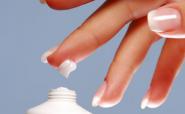Moisturizers are a key component of your skin care regimen. They serve to hydrate the skin cells and keep the moisture of the skin well balanced. There are a variety of moisturizers available in the market that cater to different skin types; while there are rich creamy moisturizers for dry skin, there are also lightweight oil-free ones available for women who have oily skin. Here are some common ingredients that go in the making of moisturizers.
 Water
Water
This is the prime ingredient of all moisturizers. Moisturizers are generally an oil-in-water solution. When you apply moisturizers, some of the water evaporates while some gets absorbed into the skin. The outermost layer of the skin, the stratum corneum soaks water efficiently; however, it is not able to bind it very well. That's why it needs an oily substance that helps lock in the water within the skin, and this is how moisturizers work. The water contents get absorbed within the skin and the oil content helps keep it there.
Occlusives
Occlusives are the substances that block the evaporation of water. Petrolatum and other such oily ingredients are common occlusives used in moisturizers. In fact, petrolatum is a primary ingredient in many moisturizers, often listed as the third or fourth ingredient of the formulation. Some of the other common occlusives are cetyl alcohol, lanolin, lecithin, mineral oil, paraffin, and stearic acid. Popular silicones that act as occlusives are dimethicone and cyclomethicone. Oil-free moisturizers that are free of all mineral and vegetable oils contain dimethicone as an occlusive agent.
No comments:
Post a Comment